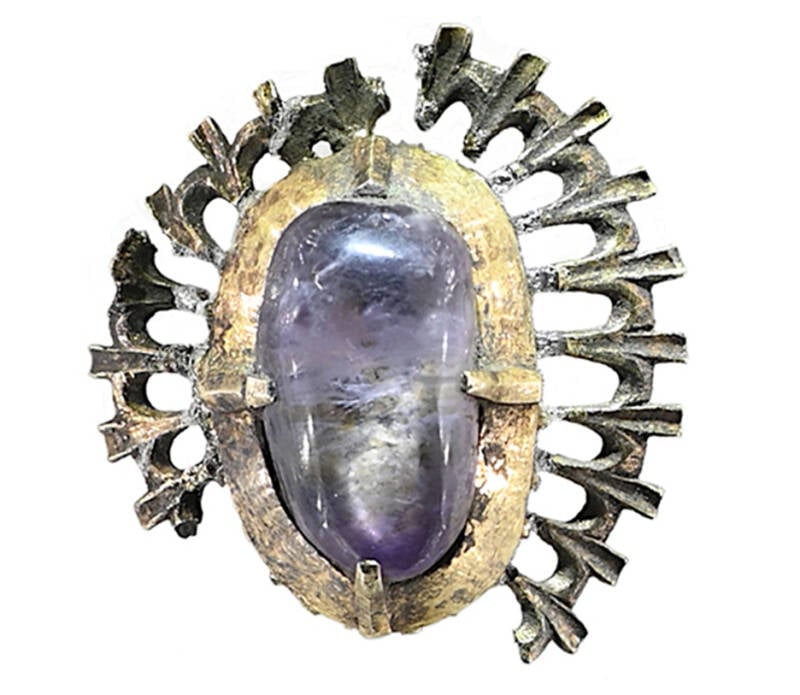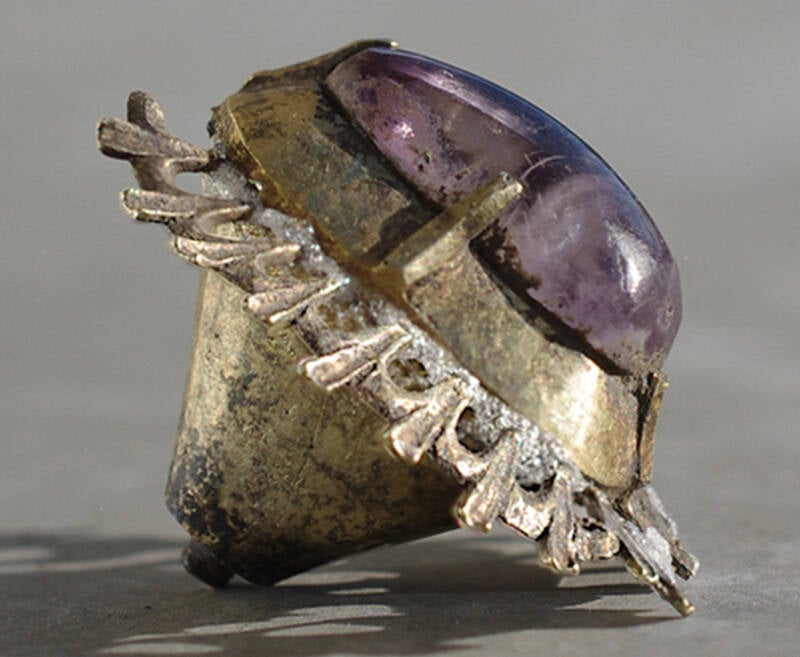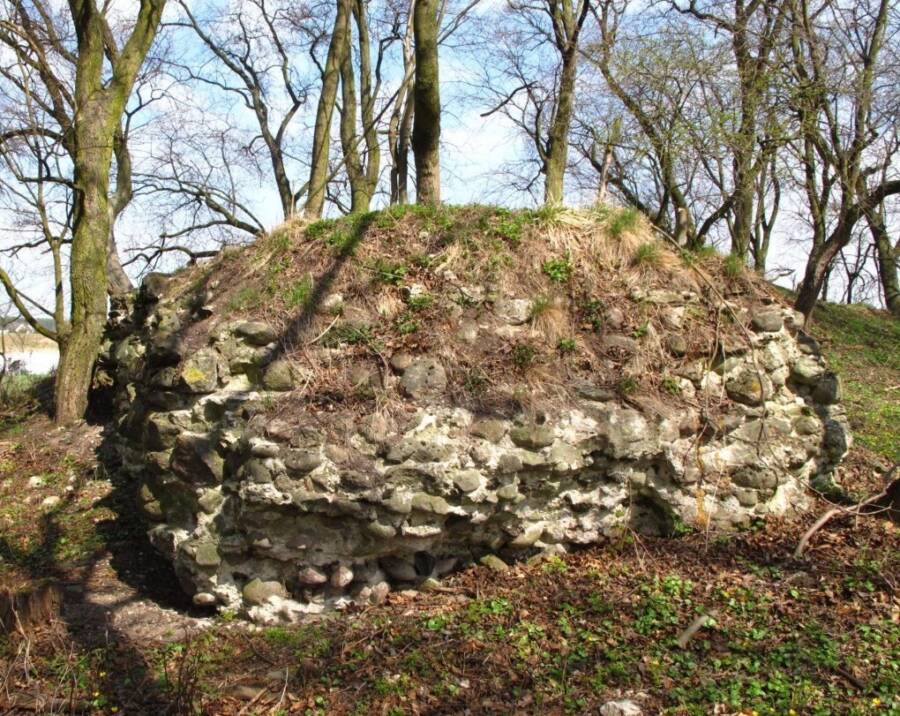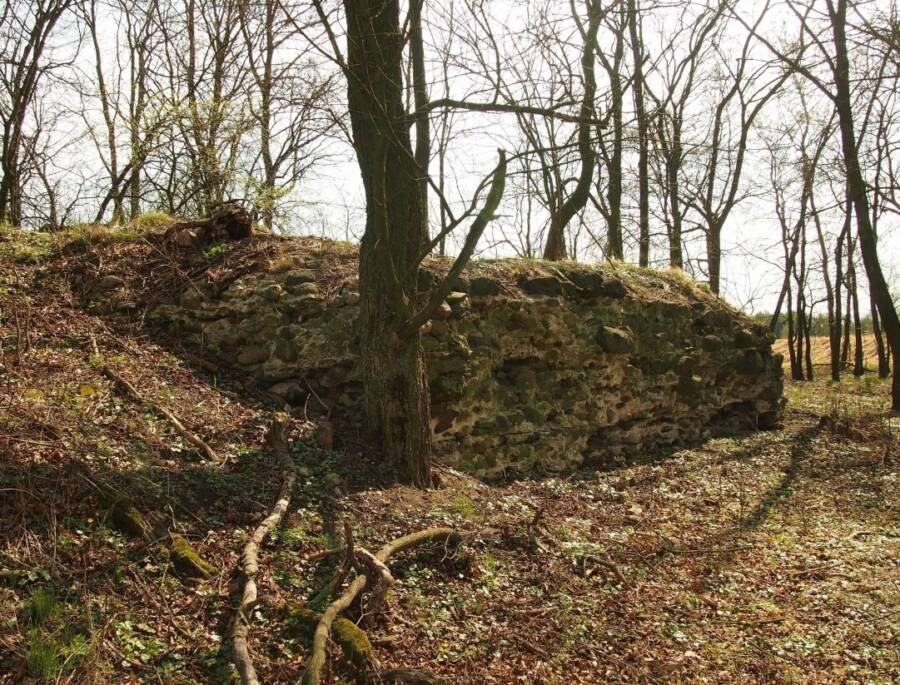Dating back roughly 600 years, this rare treasure was found in the sediment between timber posts that once supported a bridge.

Lech Marek/AntiquityThe amethyst was discovered at the bottom of the former moat that once encircled Poland’s Castle Kolno.
A 600-year-old amethyst jewel, believed to have been part of a brooch, was recently discovered in the remains of the moat that once surrounded the ruined Castle Kolno in southwestern Poland. This rare treasure was found in the sediment of the former moat, in between the wooden posts of a now-defunct bridge.
It’s uncommon for archaeologists to unearth medieval jewelry outside of a tomb or a hoard, making this find all the more exceptional. What’s more, this discovery provides a particular window into medieval nobility and life at Castle Kolno during the Middle Ages.
The Discovery Of A Medieval Amethyst Jewel At Poland’s Castle Kolno

Lech Marek/AntiquityThe amethyst may have been part of a bigger setting, such as a brooch or a crown.
Archaeologists believe that whoever the amethyst belonged to may have been traveling to or from Castle Kolno, according to a paper describing the jewel in the journal Antiquity.
The authenticity of the amethyst was confirmed using Raman spectroscopic analysis, a method of identifying rocks and gemstones by shooting lasers at the substance in order to determine its molecular composition. Further X-ray analysis revealed that the metal gilt in which the rock was set was fire-gilded silver.
Furthermore, there is a ring surrounding the amethyst with pieces of metal creating a ray or petal pattern. There are also remnants of a silver pin and lead solder on the back of the artifact, indicating it was likely part of a bigger piece.

Lech Marek/AntiquityA lidar scan of Castle Kolno, where the amethyst was found.
“I believe the item was originally part of a brooch or, less likely, a coronet or a crown, which makes it so unique in a medieval settlement context,” Lech Marek, an archaeologist at Poland’s University of Wrocław told Live Science.
The piece was dated using clues from both the wood and the sediment in which the object was found as part of a stratigraphic analysis, a method that examines sediment layers, as well as dendrochronology, a method that examines tree rings. In the end, archaeologists determined that the amethyst was from somewhere between the early 14th century and the mid-15th century.
How This Jewel Provides A Look Into Castle Kolno’s Dramatic Past

National Institute of Cultural HeritageCastle Kolno was burned down in the 1400s, and only ruins remain today.
Castle Kolno was founded sometime in the early 13th century by Duke Bolesław III of Brzeg.
In addition to serving as a fortress and the Duke’s palace, the castle also played a customs-type role, controlling the transport of wood in the region. The Duke later sold the castle to some local nobility, who may have been knights.
The castle changed hands a few more times before burning down in 1443 during the aftermath of the Hussite Wars. It was likely a casualty of violence between rival duchies in the Silesia region of Poland.
Since excavations of the castle site began in 2010, archaeologists have found numerous artifacts, mostly dating to sometime between the 14th and 15th centuries. They’ve primarily found military relics and cavalry items from the castle’s days as a fortress and palace, as well as ceramic fragments.
What makes the discovery of the amethyst particularly valuable is the setting in which it was unearthed. Most jewelry from the medieval era has been found in tombs or hoards, making this stone a rare one.

National Institute of Cultural HeritageArchaeological excavations began at Castle Kolno in 2010.
Amethysts were popular in the medieval period. According to some medieval folklore, amethysts were said to have protective abilities, guarding their holders from the likes of intoxication, venom, gout, bad dreams, treason, deceit, captivity, blindness, enchantment, and strangulation.
“In the sophisticated medieval play of symbols, the choice of gems for jewelry always had a deeper reason,” Marek said. “If a jewel was believed to be charged with supernatural powers, its value increased rapidly.”
The question then remains: Why was this precious amethyst dropped, tossed away, or otherwise forgotten? Though excavations at Castle Kolno will continue, the answer may never be known for sure.
After reading about the amethyst jewel found in a Polish castle’s moat, learn about the medieval moat and bridge that archaeologists uncovered in England. Then, see the castle and moat found underneath a hotel in France.





